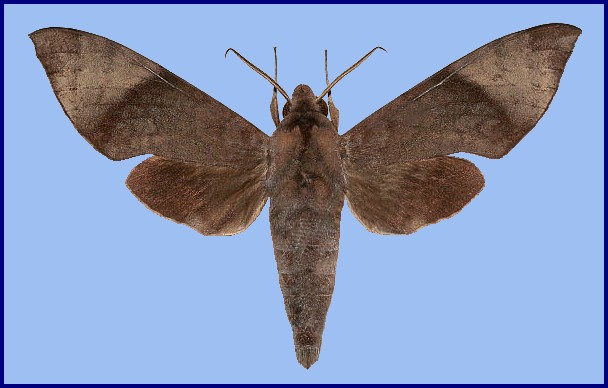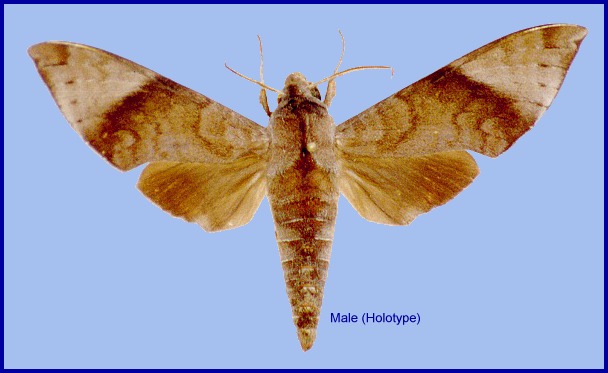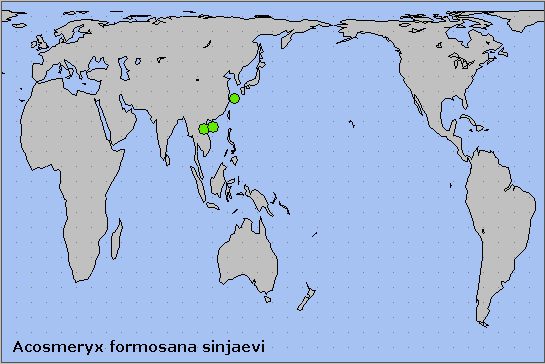

Acosmeryx sinjaevi Brechlin & Kitching, 1996, in Kitching & Brechlin, 1996, Nachr. Ent. Ver. Apollo (N.F.) 17: 62. Type locality: Northern Vietnam (Tonkin), Thanh Hoa, Ben En National Park, 40km southwest of Thanh Hoa, 18°40'N 105°40'E, 200m.
Note: Synonymized with Acosmeryx formosana (Matsumura, 1927) by Haxaire & Melichar, 2023, but treated as a subspecies thereof. Acosmeryx formosana sinjaevi differs in habitus from the nominotypical subspecies by a slightly slenderer appearance and a paler coloration. In the male genitalia, the harpe is narrower, and less triangular in appearance and; in Acosmeryx formosana formosana this has a double toothed ridge running across its entire width, whereas in Acosmeryx formosana sinjaevi the ventral row is half as long as the dorsal row (Haxaire & Melichar, 2023).
Very similar to Acosmeryx formosana formosana.
In Guizhou, found in valleys at an altitude of 1000m (Xu ZhenBang, pers. comm. 2023).
China: 20.ii-10.iv (Hainan); 12.iv (Guizhou); 6.v (Guangdong); iv-vi (Fujian); vi (Hainan); vii (Hunan).
OVUM: Unknown.
LARVA: Unknown.
PUPA: Unknown.
Larval hostplants. Unknown.
Unknown.
China: Guizhou (Leigongshan Nature Reserve); Hunan (Jiucai Ling, 1300m); Fujian (Shawuang Shan, near Shaowu, 1524m; Chiyantou Shan, near Longyan); Guangdong (NanLing National Forest Park); Hainan (Wuzhi Shan, 1500m; Duowen Ling, nr Lingao).
Northern Vietnam and southern China.
[Formally recorded from northern India (Arunachal Pradesh), but this population has now been given subspecific status, namely Acosmeryx formosana arunachalensis Haxaire & Melichar, 2023].

 Return to Sphingidae of the Eastern Palaearctic species list
Return to Sphingidae of the Eastern Palaearctic species list